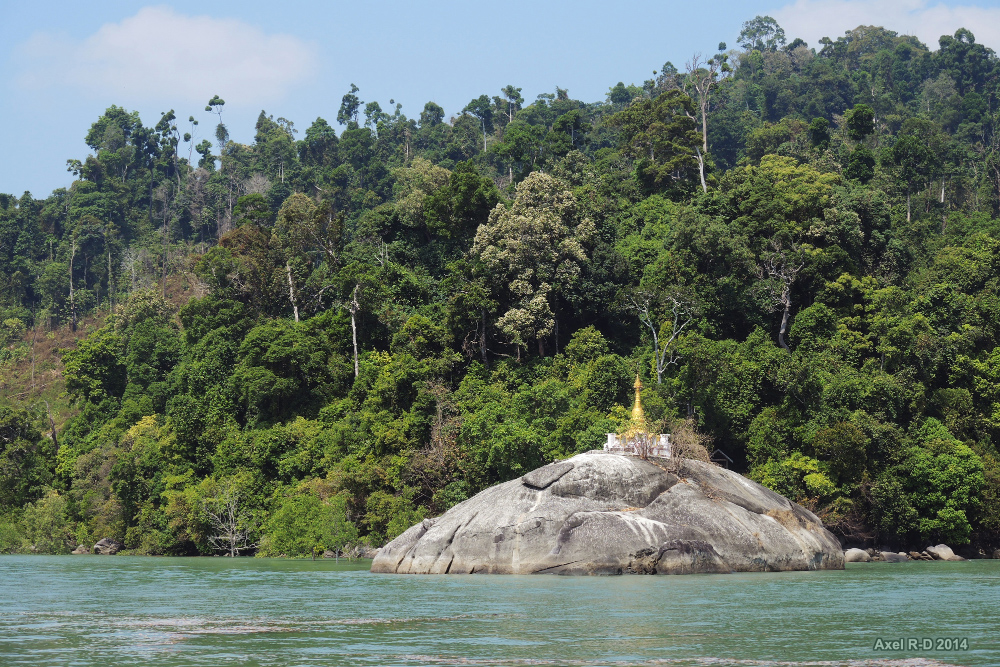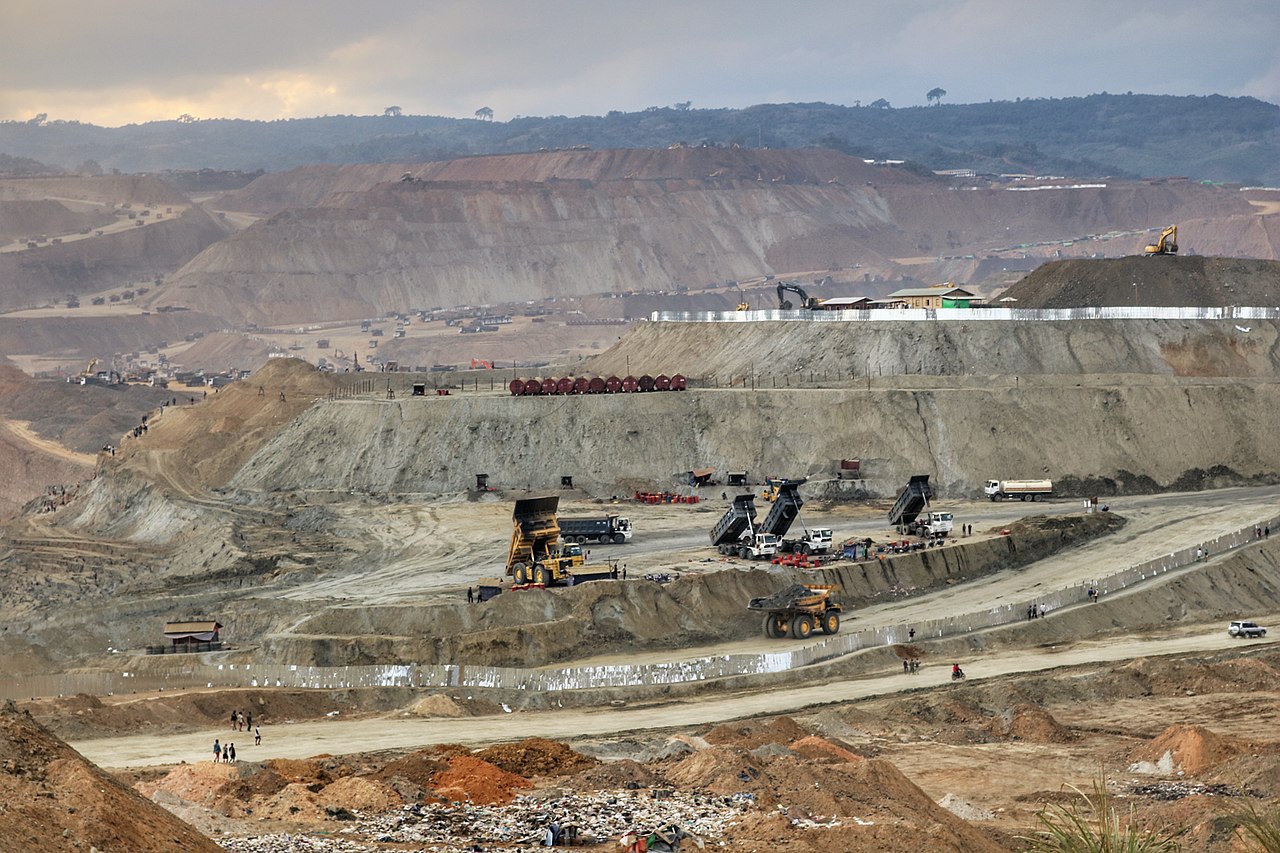- Within the shrinking civic space and violent aftermath of Myanmar’s February 2021 military coup, community-level efforts to safeguard Myanmar’s vast tracts of forest from development are buckling under the pressure of rampant resource extraction.
- Representatives of Indigenous peoples and local communities recently highlighted the challenges facing IPLCs in the country, many of whom have been displaced by conflict and estranged from their ancestral lands and forests.
- Environmental defenders and Indigenous rights activists are among those targeted for arrest and detention by military-backed groups.
- Activists are questioning how the world can seriously address global climate change when environmental defenders are actively being prevented from taking action.
Myanmar harbors some of the most extensive tracts of old-growth forest in mainland Southeast Asia. These forested landscapes represent many of the region’s last refuges of rare and threatened species, including tigers, leopards and gibbons. And besides their importance for biodiversity, they also absorb vast amounts of carbon dioxide from the atmosphere.
Strides have been made in forest protection over the past decade, but violent conflict, shrinking civic space and “rampant” natural resource extraction in the wake of the February 2021 military coup have severely hampered community-level efforts to safeguard the country’s ecosystems from development, according to representatives of Myanmar’s Indigenous peoples and local communities (IPLCs) participating in a recent online discussion.
“Environmental defenders have been targeted by [the military-led State Administration Council] and aligned forces for resisting expanding mining, land confiscations and logging in their territories,” said Saw Alex, a representative of the All Burma Indigenous Peoples Alliance (ABIPA), a nationwide network of civil society and community organizations that hosted the Nov. 4 online event. Saw Alex was speaking at the event under a pseudonym for security reasons.

With the event held during the lead-up to the COP27 climate summit in Egypt, speakers also addressed the key role that IPLCs, who account for roughly 40% of Myanmar’s population, can play in mitigating climate change through the protection of customary lands and forests under their stewardship for generations.
However, Rosa, a legal expert at ABIPA and also speaking under a pseudonym, said that with the rapid closing of civic space in the country, many groups that were making progress over the past decade were forced to abandon their activities.
Participants questioned how the world can address the enormous challenge of climate change when environmental defenders in countries such as Myanmar are prevented from taking action. “The rights of Indigenous peoples in Myanmar are not only a human rights issue, but an environmental issue of global magnitude,” Rosa said.
Tom Andrews, the U.N. special rapporteur on the situation of human rights in Myanmar, said that although IPLCs have been making progress to “protect their lands and forests and save fragile ecosystems” over the past decade, that came to an abrupt halt with the coup.
The military regime and its associates are “forcibly evicting people from their homes to make way for mining developments,” Andrews said. “Those who speak up are threatened, arrested or murdered. Conflict is further displacing these groups as they seek shelter in the forests, unable to protect the land they depend on for water, food and medicine.”
Myanmar’s military regime has been widely criticized for relying on natural resources, such as mining, logging and oil and gas reserves, to generate foreign revenues to fuel its activities. Its forces have arrested more than 16,000 people and overseen the killing of more than 2,400 since the coup, according to AAPPB, a group that has closely tracked casualties and arrests during this time.

Speaking at the event, F. Abreu, a representative of ABIPA speaking under a pseudonym, said that breakdown in the rule of law since the coup is leading to uncontrollable environmental destruction. “The extractive companies and [other] actors no longer pay any attention to rules, regulations and laws,” he said.
In 2022, ABIPA carried out interviews and focus group discussions with 233 IPLC members from 22 villages and seven townships in the states of Kachin, Shan and Karen, and the region of Tanintharyi, to find out how escalating levels of resource extraction are affecting them. What they found was a vicious cycle.
Under pressure of environmental destruction, violent conflict and insecurity, many interviewees had abandoned their farms and villages, ABIPA reports. Left without access to a livelihood, some have had no choice but to work at mining sites that are stripping mountainsides and riverbanks of trees and polluting watercourses that provide the sole source of drinking water for many displaced communities. Furthermore, at least half of the more than 1 million people internally displaced by the conflict have sought refuge in Myanmar’s forested landscapes, creating new pressures on already heavily impacted ecosystems.
According to the ABIPA research, gold mining has rapidly expanded north of the city of Myitsone along the confluence of the Mali Kha and N’Mai Kha rivers in Kachin state, an area widely recognized as the beginning of the Irrawaddy River. “The confluence is a landmark area for not just the Kachin people, but also the entire country,” Rosa said. “The large-scale mining in the Myitsone area is concerning and could potentially restart the Myitsone dam construction project which has been opposed [throughout] the country.”
Rosa added that local communities are left baffled and discouraged by the stark contrast between their present situation and that of just over a decade ago, when, under a civilian government, they were able to raise objections to plans to build the large-scale hydropower dam. Public activism at that time prevented the project from progressing, but now they’re unable to stop clandestine mining along the same stretch of river out of fear of reprisals for their activism.
Further south, gold mining has also proliferated along watercourses in the Tanintharyi region. Residents reported to ABIPA that one of Tanintharyi River’s main tributaries, Balaw Creek, was destroyed over a six-month period due to unchecked mining activity since the coup. Fish populations have disappeared, the river has been polluted, and water flow has been blocked by mining waste, according to the ABIPA research.

Given that the latest assessment from the Intergovernmental Panel on Climate Change held that conflict-ridden countries are the least equipped to deal with the consequences of climate change, preservation of Myanmar’s intact forest landscapes is all the more pertinent, speakers at the online event said.
Andrews said that with security risks and travel restrictions blocking a comprehensive assessment of the full extent of environmental degradation following the military takeover, it’s hard to imagine the full extent of the destruction that is actually happening.
“If the world is serious about tackling climate change, then the world needs to pay attention to Myanmar, from where 90% of the world’s jade flows, from where rare earths power smartphones, from where teak lines luxury ships,” he said. “What is needed now is action, action that the people and the precious and fragile natural environment of Myanmar need and deserve … the stakes could not be higher.”
Banner image: Fishers in south Myanmar backed by a landscape of karst and lowland forest. Image by Andrea Pepoli via Creative Commons (CC BY 2.0)
Carolyn Cowan is a staff writer for Mongabay. Follow her on Twitter @CarolynCowan11
FEEDBACK: Use this form to send a message to the author of this post. If you want to post a public comment, you can do that at the bottom of the page.














